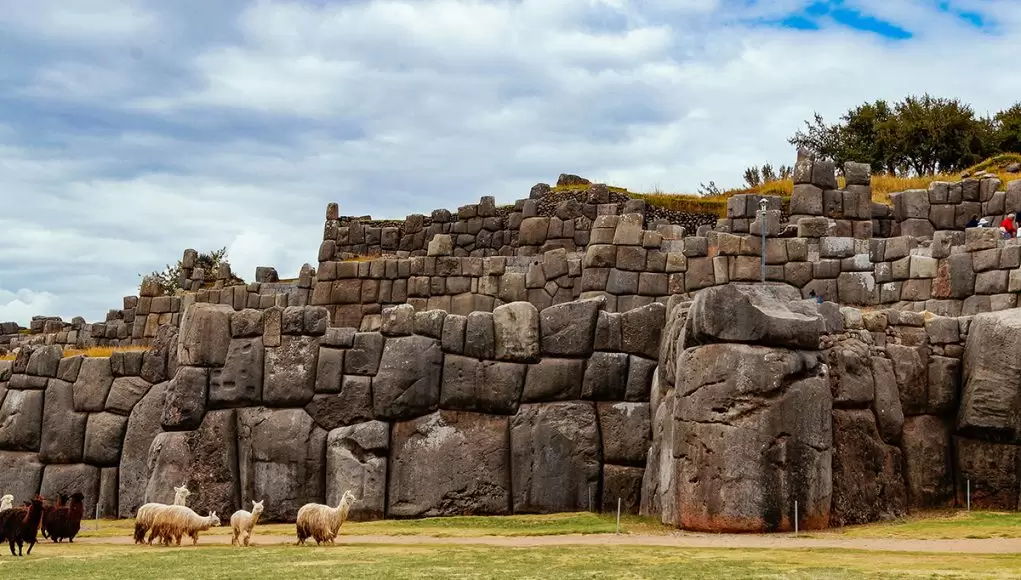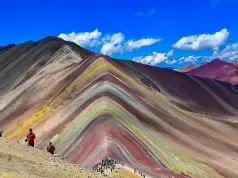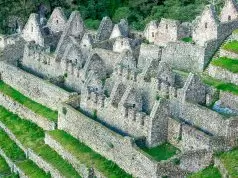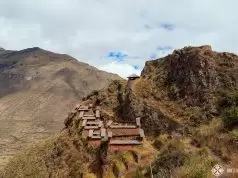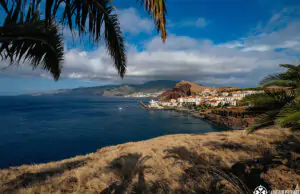Everything you need to know about doing a Sacsayhuamán tour, what to expect and how to get there.
Cusco was once the capital of the Incas. And the crown jewel of the Inca empire was a monolithic fortress above the city: Sacsayhuamán. A fortress of such epic proportions even the conquistadors were more than impressed. If you want to visit the amazing ruins, this is your guide.
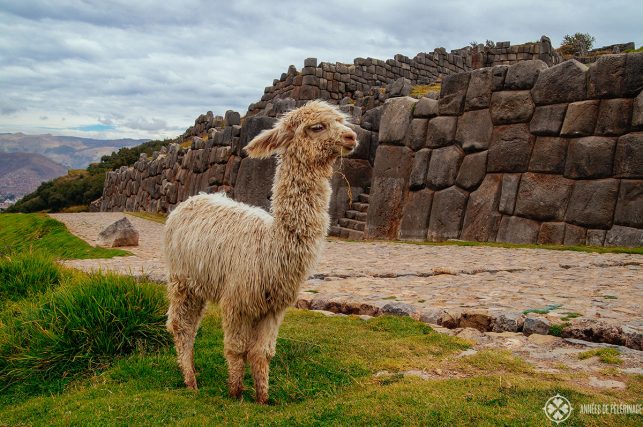
When was Sacsayhuamán built?
Sacsayhuamán was built in the second half of 15th century by the Inca Pachacutec Yupanqui and Tupac Yupanqui. It took some 70 years to finish. Archeologists found an earlier Killke culture site underneath Sacsayhuamán that was dated back to the 11th century.
The Inca fortress once guarded the most important access point into the city – just one of many reasons the UNESCO declared it a World Heritage site in 1983. Sadly, the Spaniards used most of the building blocks to build the cathedrals and palazzos in the city below. Still, Sacsayhuamán is a true must-visit in Cusco (read my guide to read the 20 other best things do in the city).
Note: I earn a small commission for purchased made through the links in this article
Starting your Sacsayhuamán tour
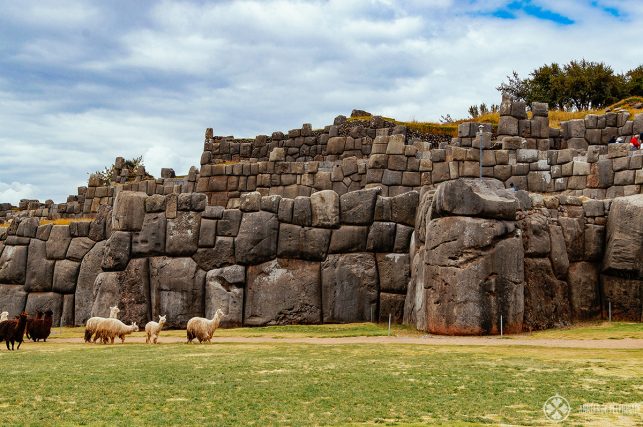
12,142 ft above sea level, that’s how high you’ll need to climb to see Sacsayhuamán, the fortress where the hawk is satiated. Mind you, a taxi will get you there quite easily (see more below), but your breathing might be a bit more belabored than usual (don’t forget to read my guide about altitude sickness).
Sacsayhuamán can be divided into three distinct parts, the central ceremonial plaza, the fortress itself, and terraced field on the other side.
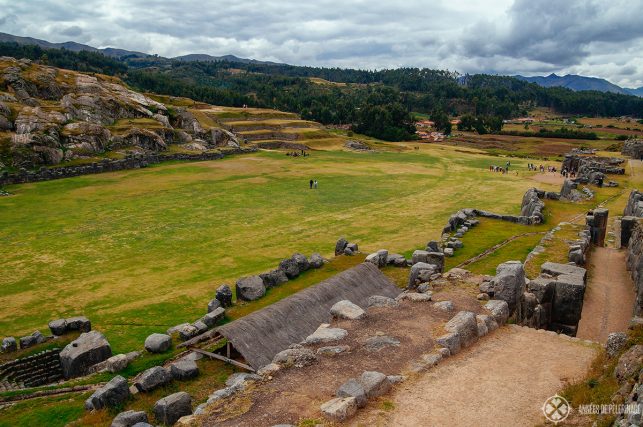
The plaza is gigantic – probably around 600 times 400 meter. To give you a good impression: That’s five times bigger than a football field, can you believe it? It’s truly massive, and standing on the immaculate lawn in front of the fortress truly makes you feel small.
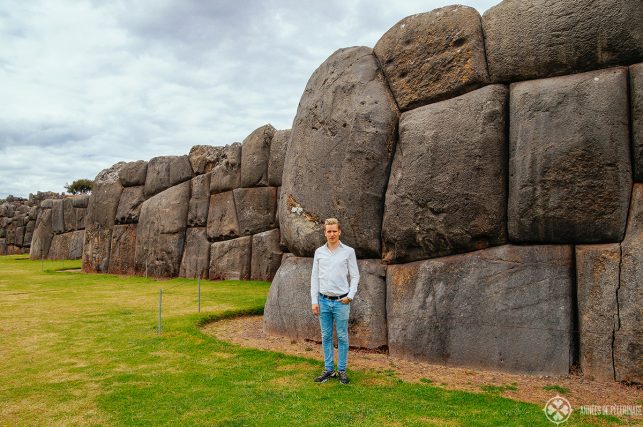
The fortress itself is quite a sight to behold. The zig-zag-wall around the basement is some 400 meters long and constructed using massive monoliths. One stone is over 9 meters high, 5 meters wide and 4 thick, at an estimated weight of 200 tons.
It’s truly beyond imagination, how these huge stones were moved and then fitted so perfectly. I also visited Ollantaytambo, the last fortress of the Incas (read my guide), but nothing prepared me for the sheer size of it!
The foundation of the fortress consists of three consecutive tiers. Each one of them getting a bit smaller.
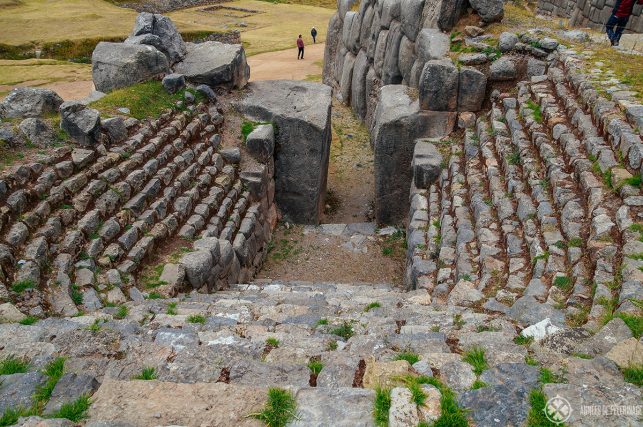
Entrance into the fortress must have once been heavily guarded and just allowed people to enter single file through the ingenious gates. A very narrow cleft in the wall was guarded by a very small portal and behind it a steep landing site that allowed defenders to shoot any intruder from above.
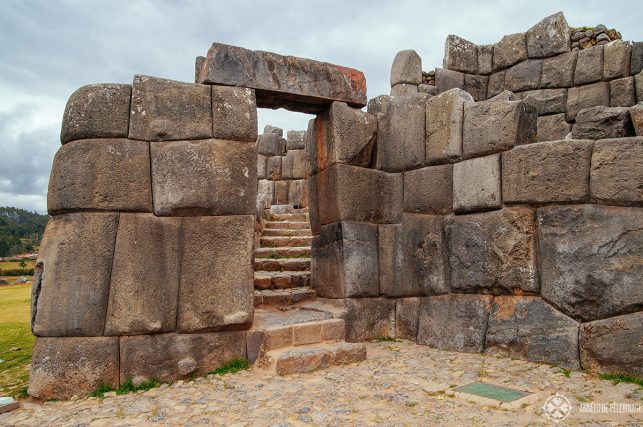
On the ground floor, there are three such gates into the fortress, which are called Ajawanapunku, T’iopunku, and Wiracochapunku.
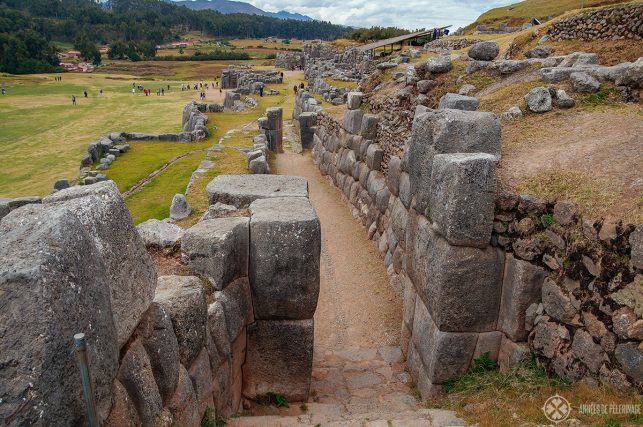
Each of the three rings of Sacsayhuamán was protected in a similar way – which made the fortress nearly impregnable. But those who read their histories probably know, that Francisco Pizzaro succeeded in his conquest of the Inca empire nevertheless.
Still, his brother, Pedro Pizzaro, once described quite detailed what was found within the fortress: Weapons, weapons, and more weapons. According to him, it was one big armory.
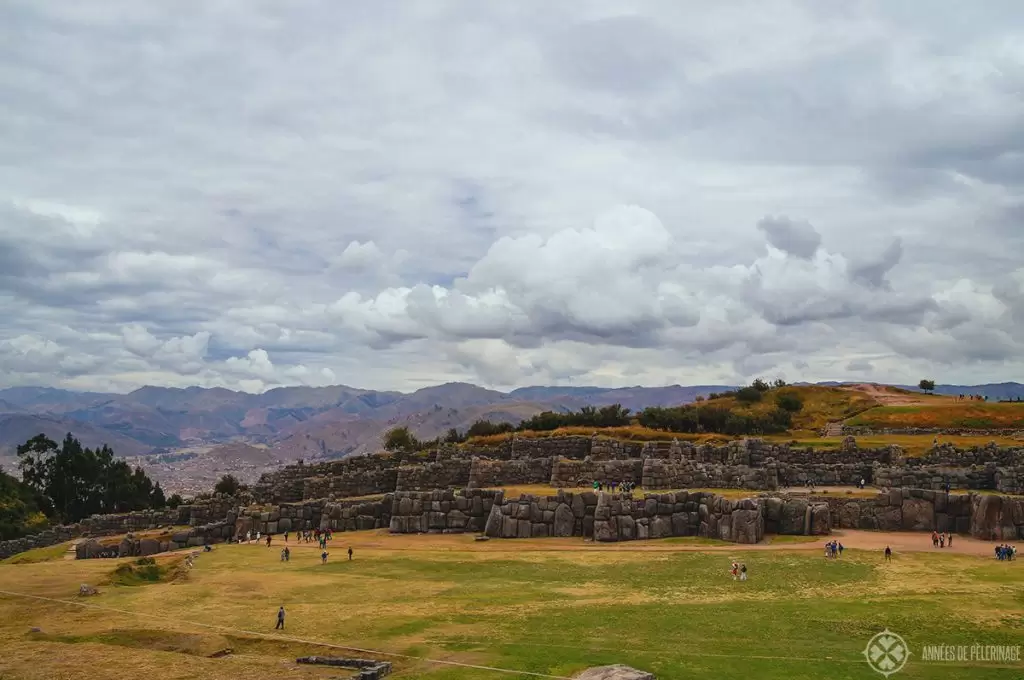
Once you clear the tired walls of Sacsayhuamán you will sadly see little of that former defensive glory. The Spaniards destroyed it all. Out of spite, but mainly because the perfect andesite (a volcanic material almost like basalt) stones of the Inca masons were prime building material for the planned cathedrals and mansions below.
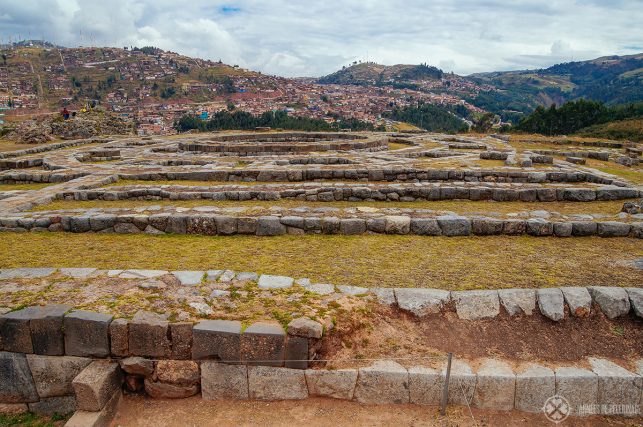
On the far left of the Inca fortress, you cannot help but notice the foundations of a circular tower. This site is called Muyuq Marka and probably was a temple of the sun.
Three concentric circular stone walls, connected by radial walls, still remain. The tower once had 4 floors and must have reached a height of about 20 meters. Quite a remarkable site, especially as the Incas usually favored square buildings (you should definitely do a day trip to Pisac to get a glimpse of what an intact temple district must have looked like; here’s my guide).
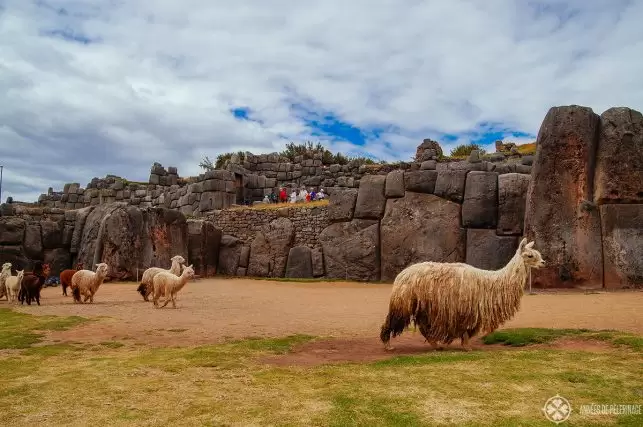
There were two more towers, Pauka Marka and Sallaq Marka right next to Muyuc Marka – interconnected by underground tunnels. Again, you’ll be able to see nothing else but the remains of the foundations.
Not far away, you’ll find the so-called throne of the Inca ( K’usilluc Jink’ian), which is a structure of tired benches hewn into the natural rock with a stunning precession. There is no archeological evidence the Inca used it as a throne, but the perfection of the masonry implies an important function.
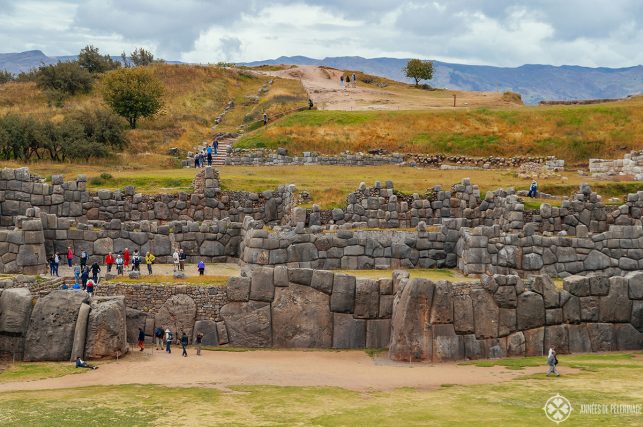
All in all, you’ll need quite some imagination to see Sacsayhuamán the way it once must have stood vigil above Cusco. This is why it might be a good idea to book a guided tour (here’s an excellent tour with an English guide through Cusco and Sacsayhuaman).
Inti Raymi
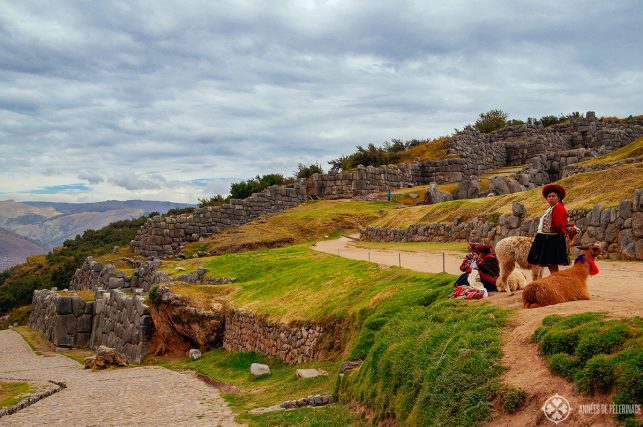
Once a year, to celebrate the winter solstice, Sacsayhuamán transforms into one big festival ground. The festival is held to honor the sun god Inti and dates back to the time of the Incas.
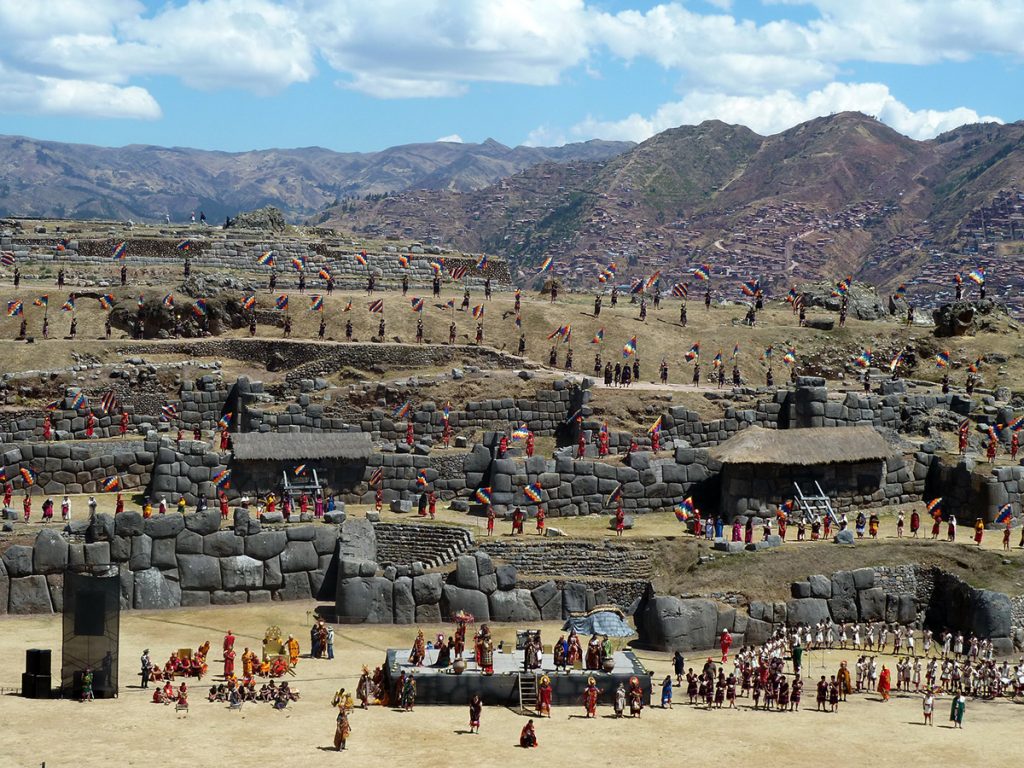
What you see today is a historical reconstruction based on the records of Garcilaso de la Vega, the most important chronicler of that time. Each year, on June 24th, thousands upon thousands of locals gather to celebrate. Naturally, it’s a tourist’s favorite as well, so you might want to plan your Peru itinerary accordingly.
Note: The original Inti Raymi was held on the main square in Cusco, the Huacaypata (what is now the Plaza de Armas).
How to get to Sacsayhuamán from Cusco old town
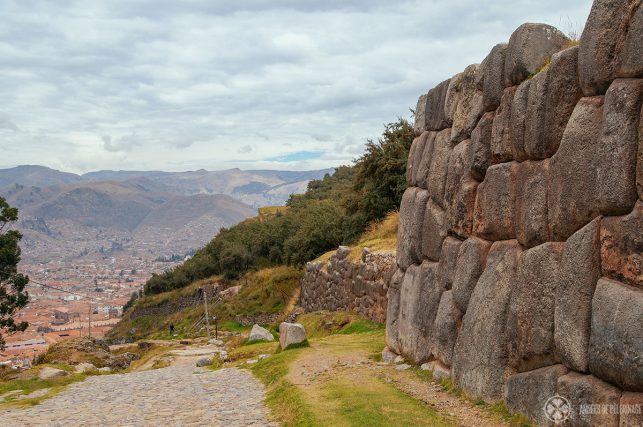
You got two basic ways to get to Sacsayhuamán – on foot or taking a taxi/bus. If you are reasonably fit and already accustomed to the high altitude, then I urge you to walk all the way to the top.
It takes about 40 minutes to reach the top, but you will be walking through the vibrant Bario San Blas where you absolutely need to stop by at the church of the selfsame name. There are many little artisan shops and cool restaurants, so it’s really worth it. The views across Cusco are also quite memorable.
That being said, the cobblestoned streets are quite steep, so the hike is weirdly taxing and you might stop to catch your breath ever so often. You will need some sturdy walking shoes (and make sure to read my Peru packing list)
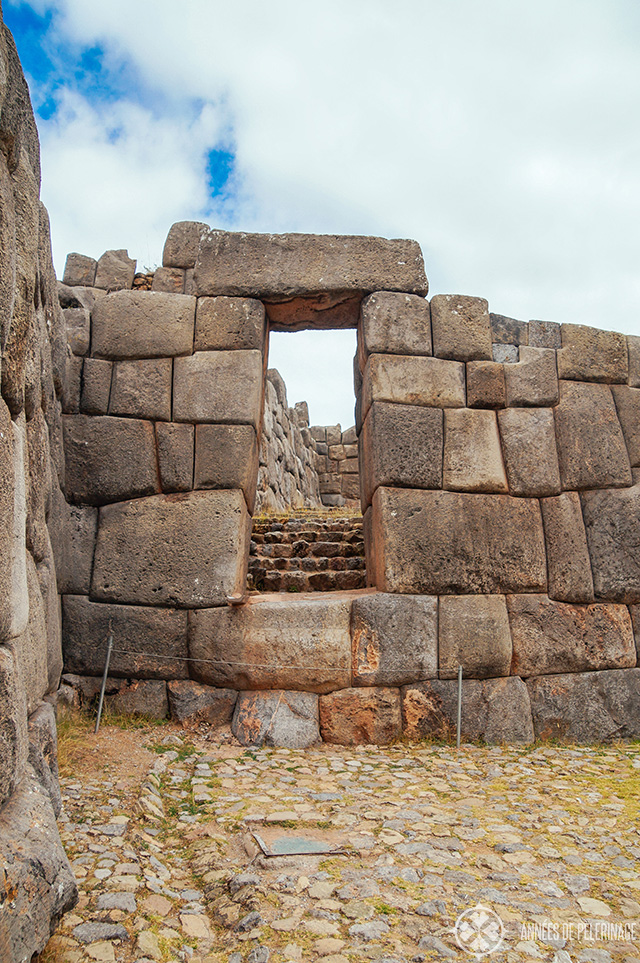
In this case, google maps will show you the way. Basically, you’ll just have to follow the road uphills from the Museo de Arte Precolmbino (Pumacurco) and stay straight.
If you rather want to get to the Inca ruins fast and easy, grab a taxi all the way to the top. It won’t cost more than a couple of dollars (around 10 soles / 3 US-Dollar). Some taxi drivers will offer you to drive you to Q’enko, Puka Pukara, and Tambomachay ruins as well. As they will have to wait for you, while you tour the ruins, they’ll charge more (around 50 soles / 16 US-Dollar).
Just in case you missed it: Here is my guide to the 10 best Inca ruins in Peru
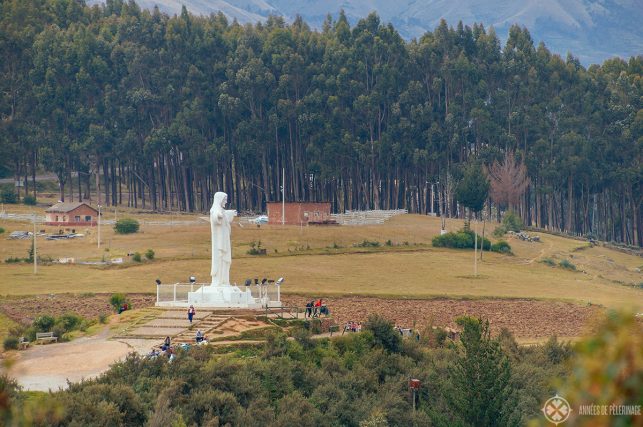
You should also visit the Cristo Blanco, an 26 feet tall statue of Christ the Redeemer above Cusco, which is only about 500 meters away from the entrance of Sacsayhuamán.
Sacsayhuamán entrance fee
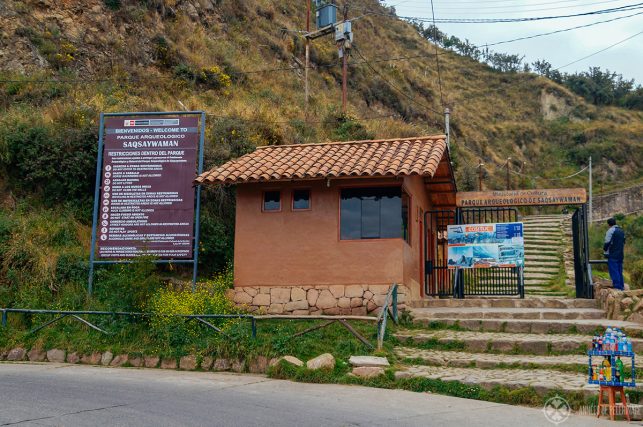
You cannot buy a single entry ticket for Sacsayhuamán. You have to buy a Boleto Turistico (here’s the official website) for at least 70. Though it pays off to the one for 130 soles (~ 40 US-Dollar), as it covers other ruins and museums in the area you will be visiting anyway.
The good news, this ticket is valid for 10 days and will cover a couple of other lovely ruins in the area. Tipon, Ollantaytambo, Pisac, and the other ruins in the vicinity. So, it’s totally worth the rather high costs. You can buy it online here.
Note: This tourist ticket does not cover Machu Picchu (but pretty much everything else)
Further reads:
- 20 amazing places to visit in Peru
- Tipon – the water gardens of the Incas
- Machu Picchu – facts & everything you need to know
- The perfect Peru itinerary
- The best day trips from Cusco
So, this was my Sacsayhuamán travel guide and how to visit the amazing Inca ruins in Cusco. Got any questions? Use the comment field below!
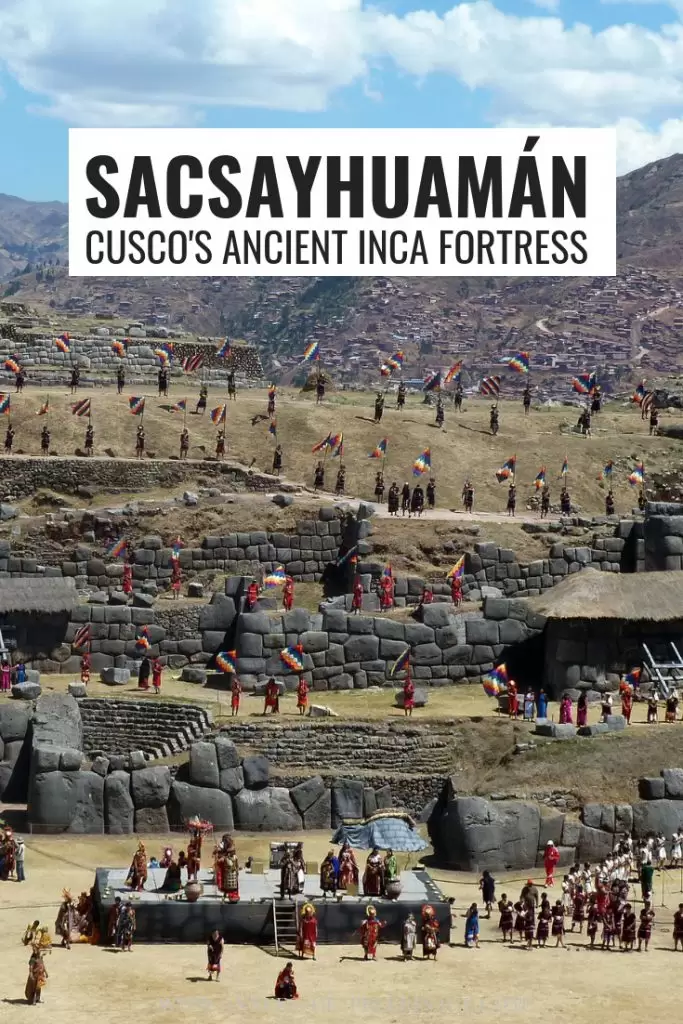
Picture credits: pululante


